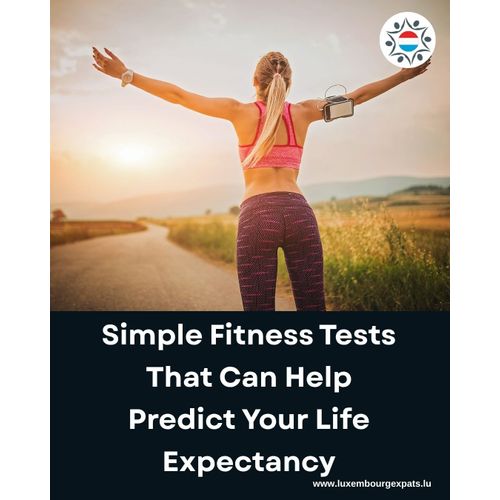Simple Fitness Tests That Can Help Predict Your Life Expectancy
LuxembourgPosted on 14 October 2025 by TeamYou don’t need expensive medical checkups or complex diagnostics to estimate your life expectancy — a few simple physical tests can already give you meaningful clues. Researchers have identified four key exercises that assess balance, strength, flexibility, and speed, all closely linked to how long and how well you might live.
Balancing on one leg is a good start. In a long-term study of 2,000 adults, those who couldn’t balance for 10 seconds or more were found to have a much higher risk of mortality. According to researcher Kenton Kaufman, holding the position for 30 seconds shows good physical condition, especially if done with both legs or even with eyes closed. Strong balance reduces the risk of tripping or falling — one of the leading causes of injury and death in older adults.
Another test focuses on grip strength. Hanging from a pull-up bar for as long as possible reveals not just upper body strength but also overall vitality. Research shows that people with stronger grip strength tend to live longer and are less likely to develop chronic diseases. The benchmarks are roughly 75–90 seconds for ages 20–40, 60–75 seconds for 40–60, and about 45 seconds for those over 60.
Next is the sit-and-rise test — sitting cross-legged on the floor and standing up without using your hands, forearms, or knees. This exercise evaluates muscle control, flexibility, and balance all at once. A study led by Claudio Gil Araújo found that middle-aged and older people who performed the move easily were six times less likely to die from heart disease or other causes over the following decade compared to those who struggled.
Lastly, your walking speed says a lot about your health. Walking six meters (about 20 feet) in a straight line and calculating your pace can reveal your physical resilience. Moving slower than one meter per second has been linked to shorter life expectancy in older adults. On the other hand, a faster pace generally indicates better cardiovascular health and mobility.
Experts agree: even modest activity makes a big difference. Just a 15-minute brisk walk daily can lower mortality risk by nearly 20%. These simple, at-home tests might not tell you exactly how long you’ll live — but they do reflect how well you’re aging.
Read More : Espérance de vie : Évaluez votre santé avec ces tests de condition physique - L'essentiel
Join the community of your own - #1 home-grown LuxExpats app
SignUp Free : luxembourgexpats.lu
I am your contact
Team
Chat









